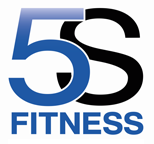Upper back and neck pain is something I see a lot of (probably as much as I see low back pain).
The first thing I look for in an individual with neck pain is the positioning of their head while standing, sitting and performing various movements.
If you have forward posture, your neck extensors (muscles on the back of your neck) are going to be under extra stress, which can lead to excess tension and in turn pain and discomfort.
Release techniques, massage and stretching will help to relieve tension and alleviate any pain or discomfort. However, ALWAYS ask – “Why are the muscles becoming tense?”
More often than not, muscles that support or oppose the muscle in question aren’t pulling their weight and therefore, the muscle has to pick up the slack.
When it come to the neck extensors, release techniques and stretches will help to alleviate pain and discomfort. From there, work needs to be done to build strength/endurance (postural muscles respond to muscular endurance work) in the muscles of the neck which help to hold the position i.e. the cervical flexors (deep cervical flexors help to stabilise the cervical spine).
Use this protocol: Release the tense muscle(s) – Stretch the tense muscle(s) – Activate muscles which appose/support the muscle(s).
Neck Pain: Release techniques on the next extensors (rolling with a peanut) for 1-2 minutes – Stretch the neck extensors for 1-2 minutes (vary the stretches to target different areas) – Complete 3-5 sets of 30-90 second holds against a wall.
This is where experienced therapists come in. They can test which muscles need what work. However, there are countless postural issues that are extremely common and easily dealt with, with the right exercises.
If you are interested in improving your posture and movement, take a look at my book “Fix Your Posture”: http://geni.us/posturePB
Thanks for reading
Jay

